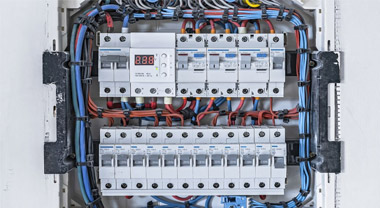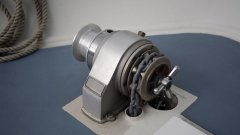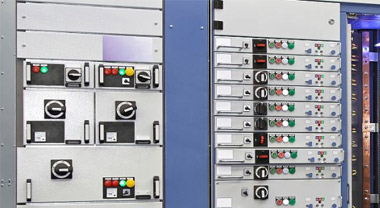Causes and prevention of overvoltage of vacuum circuit breaker
Vacuum circuit breakers have many advantages such as small maintenance workload, large interrupting capacity, and suitable for frequent operation. They have gradually replaced other types of switches in power systems and have been widely used. However, the operating overvoltage problem of the vacuum circuit breaker in use has also aroused people's attention and worry. Therefore, the reasons for the overvoltage of the vacuum circuit breaker and how to protect it are discussed.
The overvoltage problem of vacuum circuit breakers has affected its development speed to a certain extent. Therefore, it is very necessary to study and explore the causes of overvoltage in combination with actual production, and take certain protective measures.
1. The type of overvoltage
1.1 Cut-off overvoltage
When the vacuum circuit breaker is breaking the small AC current, due to the arc extinguishing chamber itself, when the current drops from the peak value and does not reach the natural zero point, the arc is extinguished, the current is suddenly interrupted, and the residual electromagnetic energy on the inductive load will generate overvoltage , We call it the intercepted overvoltage. The interception of over-voltage is not unique to vacuum circuit breakers. Circuit breakers of other media occur, but vacuum circuit breakers are more likely to occur, especially when breaking small inductance currents, the interception value and its overcurrent multiple will be higher. It may cause harm to the power system, especially high-voltage electrical appliances.
1.2 multiple reignition overvoltage
When the vacuum circuit breaker is breaking large inductive currents (such as motor starting current, etc.), even if it is not a problem to intercept the over-voltage, over-voltage hazards often occur and the insulation between the turns of the motor is broken down. This is mainly due to the vacuum circuit breaker many times The overvoltage caused by reignition is called multiple reignition overvoltage. Many conditions must be met for the occurrence of multiple reignition overvoltages, so the probability of occurrence is small, but once it occurs, its harm cannot be underestimated, so necessary preventive measures should be taken.
1.3 Capacitive Overvoltage
Vacuum circuit breakers have better performance than other types of circuit breakers in breaking capacitive loads. However, when switching the power capacitor bank, the dielectric recovery strength after the gap arc of the vacuum circuit breaker is not stable enough and the DC withstand voltage level is reduced. Breakdown occurs and thus overvoltage occurs.
2. Preventive measures
The overvoltage that occurs during the use of vacuum circuit breakers brings harm to the insulation of power equipment. Therefore, corresponding measures should be taken according to the type of overvoltage to reduce the generation and value of overvoltage, except for vacuum circuit breakers. In addition to manufacturing process problems, protection devices can be added to change the load parameters to achieve the goal.
2.1 Capacitor protection Parallel capacitors on the inductive load end can effectively reduce the load impedance, thereby reducing the amplitude of the intercepted over-voltage, and can also slow down the steepness of the leading edge of the over-voltage, which can not only protect the inductive load from the intercepted over-voltage Damage, can also reduce the harm to the motor insulation caused by multiple reignition overvoltages. The vacuum circuit breaker is connected to the transformer or motor with a cable. Because the cable has a large distributed capacitance, its function is equivalent to a parallel capacitor, and the effect is very good.
2.2 Resistor-capacitor protection The resistor R and the capacitor C are connected in series as a protective element and connected in parallel at the load inlet to form an RC overvoltage suppressor. Capacitors can not only slow down the steepness of the over-voltage rise, but also reduce the wave impedance of the load, thereby reducing the intercepted over-voltage. The function of the resistance is: when the current is blocked, its existence increases the attenuation coefficient of the high-frequency discharge circuit, which can reduce the number of reignitions and reduce the overvoltage of multiple reignitions, and can even effectively prevent its occurrence. Use RC suppressor to protect electric motor and other loads, the effect is best.
2.3 Non-linear resistance protection
(1) Use ordinary arresters in parallel with capacitors, ordinary arresters can limit the amplitude of overvoltage, and capacitors are used to slow the steepness of overvoltage rise.
(2) Metal oxide surge arrester is used, which uses ZnO varistor, is a surge arrester without arc extinguishing gap, and has the stable characteristics of semiconductor transistor. Under the normal working voltage, the resistance value is very large and the current is small. When the voltage increases to a certain value, the resistance value drops, showing stable characteristics. It should be noted that the metal oxide arrester should be used for over-voltage protection, and its model should be consistent with the system voltage, and should match the inductive load or capacitor bank capacity appropriately.
2.4 Inductance protection The LR overvoltage suppressor composed of a series reactance coil (or saturable reactor) and a resistor in parallel between the vacuum circuit breaker and the motor power supply cable to suppress the steepness and peak value of the overvoltage.




